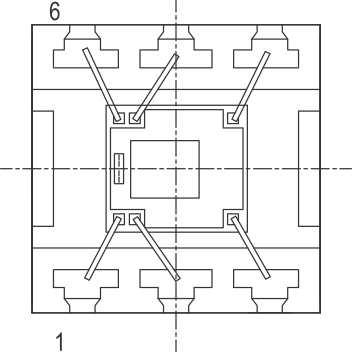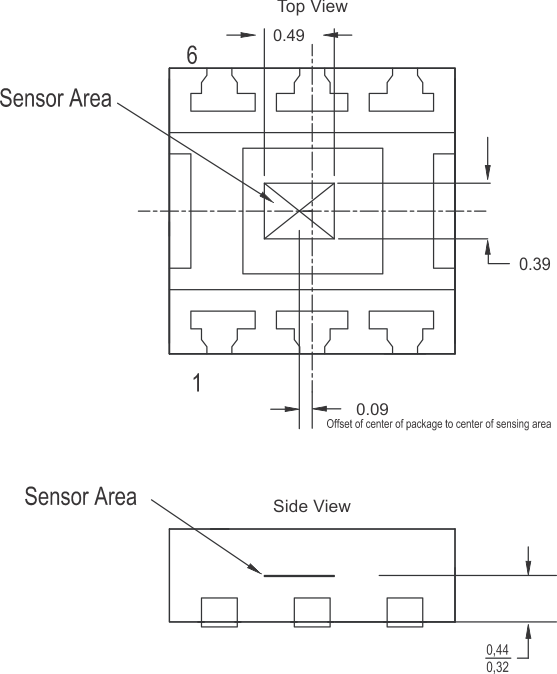JAJSC89A May 2016 – June 2016 OPT3002
PRODUCTION DATA.
- 1 特長
- 2 アプリケーション
- 3 概要
- 4 改訂履歴
- 5 Pin Configuration and Functions
- 6 Specifications
- 7 Detailed Description
- 8 Application and Implementation
- 9 Power-Supply Recommendations
- 10Layout
- 11デバイスおよびドキュメントのサポート
- 12メカニカル、パッケージ、および注文情報
12 メカニカル、パッケージ、および注文情報
以降のページには、メカニカル、パッケージ、および注文に関する情報が記載されています。これらの情報は、指定のデバイスに対して提供されている最新のデータです。このデータは予告なく変更されることがあり、ドキュメントが改訂される場合もあります。本データシートのブラウザ版を使用されている場合は、画面左側の説明をご覧ください。
12.1 ハンダ付けと取り扱いについての推奨事項
OPT3002はJEDEC JSTD-020に準拠し、3つのハンダ付けリフロー作業について認定済みです。
過剰な熱を加えるとデバイスが変色し、光学性能に影響するおそれがあることに注意してください。
ハンダ付けの熱プロファイルや、その他の情報については、アプリケーション・レポート『QFN/SONのPCB実装』を参照してください。OPT3002をPCBから取り外す必要がある場合、デバイスは再取り付けせず破棄してください。
一般的な光デバイスと同様に、OPT3002は特別な注意を払って取り扱い、受光面に汚れや傷が付かないようにしてください。詳細な推奨事項については、Do's and Don'tsセクションを参照してください。最高の光学性能を実現するため、ハンダ付け作業の後で、フラックスや他の破片を取り除いてください。
12.2 DNP (S-PDSO-N6)メカニカル図面
 Figure 25. パッケージ方向: ピン1の視覚的参照図
Figure 25. パッケージ方向: ピン1の視覚的参照図(上面図)
 Figure 26. センシング部分の場所を示す機械的概略図
Figure 26. センシング部分の場所を示す機械的概略図(上面および側面図)